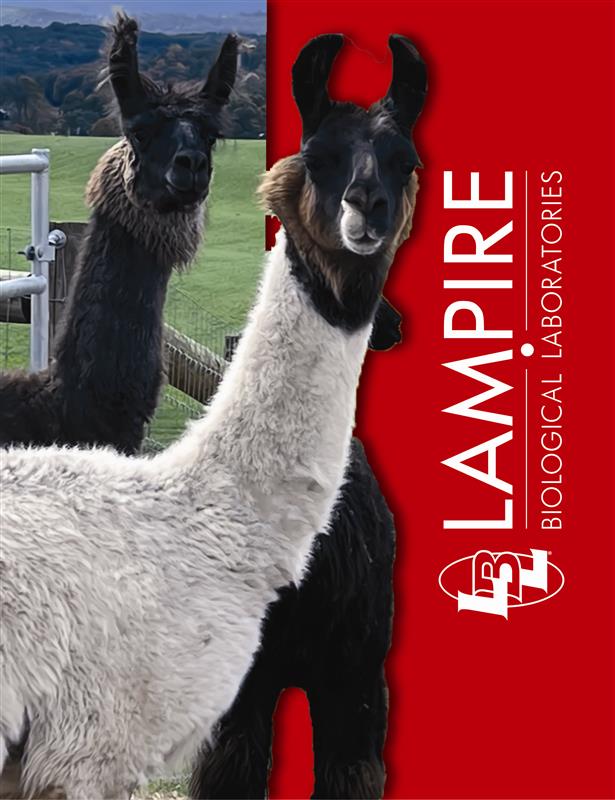
With one of the most unique immune systems, many researchers are hoping Llamas will be key to finding cures to our most common threatening diseases. LAMPIRE houses llamas at our 600-acre Pennsylvania location for your research needs, many of which are already being utilized for nanobody based Covid-19 drug development. Contact us today to reserve llamas for your upcoming project.
When using LAMPIRE for your production needs, our Technical Team and Project Management department will work with you to find the best protocol for your needs, producing results in as little as 6 weeks or creating custom protocols to meet your specific needs. Contact us today!
Why Llamas:
- Unique heavy chain only antibodi...Read more
With one of the most unique immune systems, many researchers are hoping Llamas will be key to finding cures to our most common threatening diseases. LAMPIRE houses llamas at our 600-acre Pennsylvania location for your research needs, many of which are already being utilized for nanobody based Covid-19 drug development. Contact us today to reserve llamas for your upcoming project.
When using LAMPIRE for your production needs, our Technical Team and Project Management department will work with you to find the best protocol for your needs, producing results in as little as 6 weeks or creating custom protocols to meet your specific needs. Contact us today!
Why Llamas:
- Unique heavy chain only antibodies
- Antibodies bind to epitopes that are inaccessible to traditional antibodies
- Longer shelf life, higher tolerance to extreme conditions and higher pH
- Recombinant 'nanobodies', or antigen-binding single domain proteins are easily engineered from llama antibody genes
LAMPIRE Llama Services:
- Polyclonal Antibody Projects
- Standard Protocols
- Custom Protocols
- Buffy Coats (PBMCs)*
- RNA Isolation*
* For Use in Downstream Antibody Production Technologies (B-Cell Approach, Phage Display, etc...)
Other Items of Interest
- PBMC Isolation From Naive Animals
- Llama Monoclonal vHH nanobodies
- Advantages of VHHS
- Advanced Screening Monoclonal
Read less